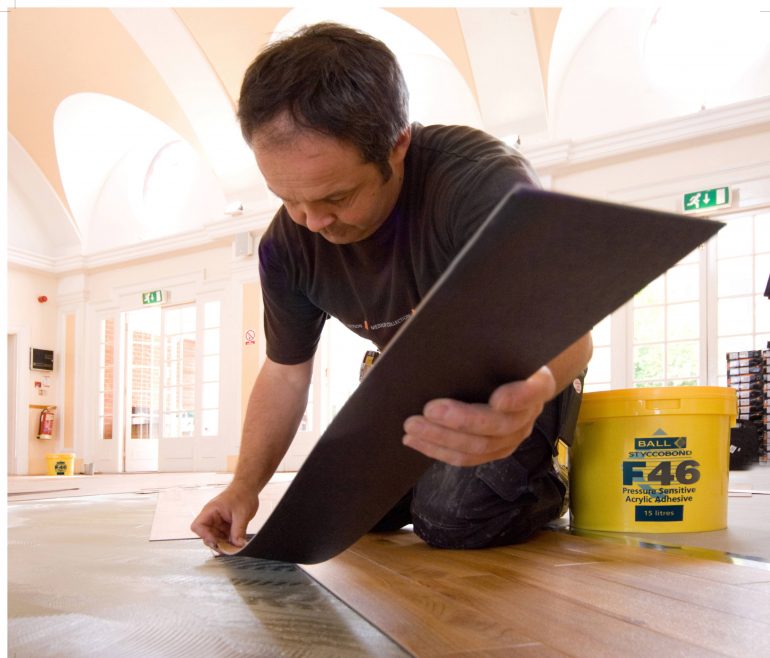The problem:
The contractor steps back to admire a finished job and notices ridges in the adhesive below showing through the floorcovering, spoiling the final result. What’s gone wrong?
Stephen says:
“Trowel serrations showing through floorcoverings, known as ‘grin-through’ in the trade, is a common problem that occurs when installing thin vinyl floorcoverings, including sheets and planks. Fortunately, you can avoid this issue by following some simple steps.
We recommend that all our adhesives are correctly applied with a notched trowel, held at a 60 degree angle to the floor. This ensures that neither too much nor too little adhesive is deposited onto the subfloor, but it also creates the ridges in the adhesive that can show through thin vinyl floorcoverings.
The solution to stopping these trowel serrations shadowing through thin vinyl floorcoverings depends on the type of adhesive being used. Pressure sensitive vinyl adhesives, which you may choose to prevent tiles and planks from moving when positioning, should be treated differently from wet lay vinyl adhesives.
Pressure sensitive adhesives need to be allowed to dry to a tacky film before floorcoverings are installed and should be rolled while still wet to flatten the ridges formed when applying the adhesive with a trowel. This provides a uniform coverage that gives better contact between the adhesive and floorcovering, and it also reduces the instance of trowel serrations showing through thin vinyl floorcoverings.
Several of F. Ball’s pressure sensitive adhesives are specially formulated to reduce the instance of trowel serrations, including Styccobond F46 pressure sensitive acrylic adhesive.
When using a wet lay adhesive, vinyl sheets or tiles are laid while the adhesive is still wet and the adhesive is forced to spread under the weight of the floorcovering, meaning shadowing is less frequently a problem. The contractor then goes over the floorcoverings with a roller afterwards. This ensures proper adhesion between the floorcovering and subfloor and limits the incidence of grin-through.
Before installing any floorcovering, it’s important that contractors consult manufacturer’s instructions to check that certain adhesives are compatible. Alternatively, contractors may see F. Ball’s recommended adhesives guide (RAG). The guide lists the adhesives recommended for use with floorcoverings produced by over 200 floorcovering manufacturers, and is available as a free app or a printed booklet, and can also be found on the F. Ball website.”


